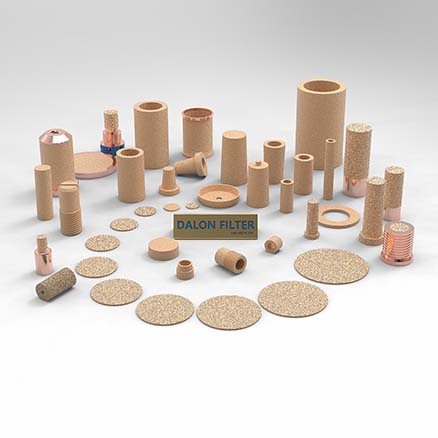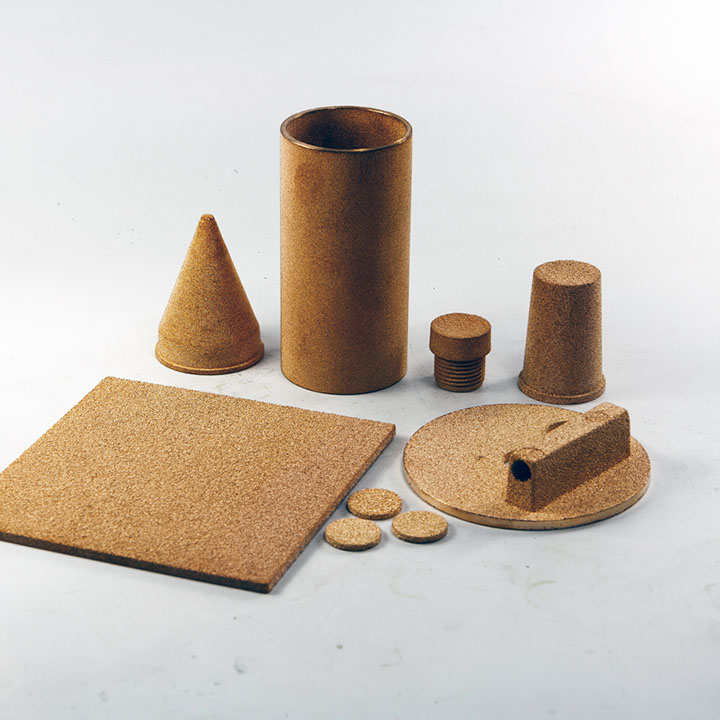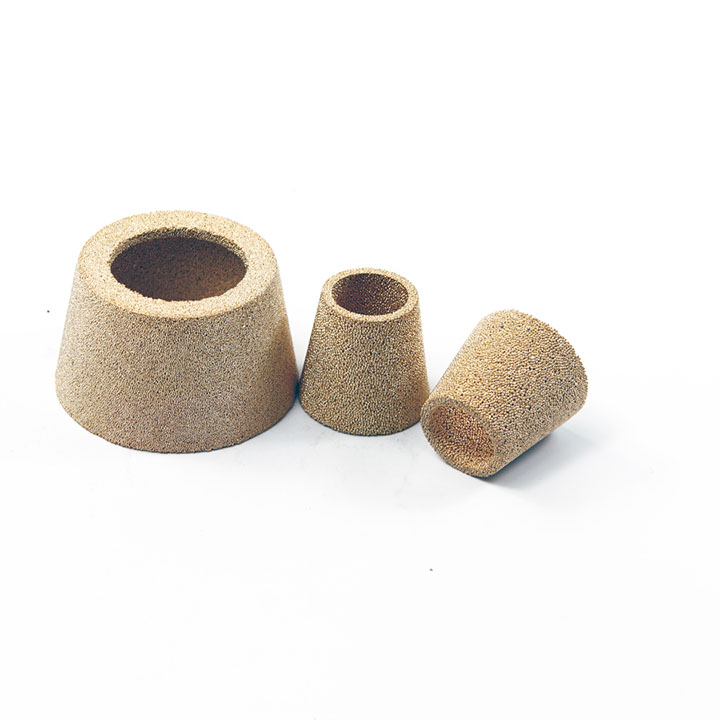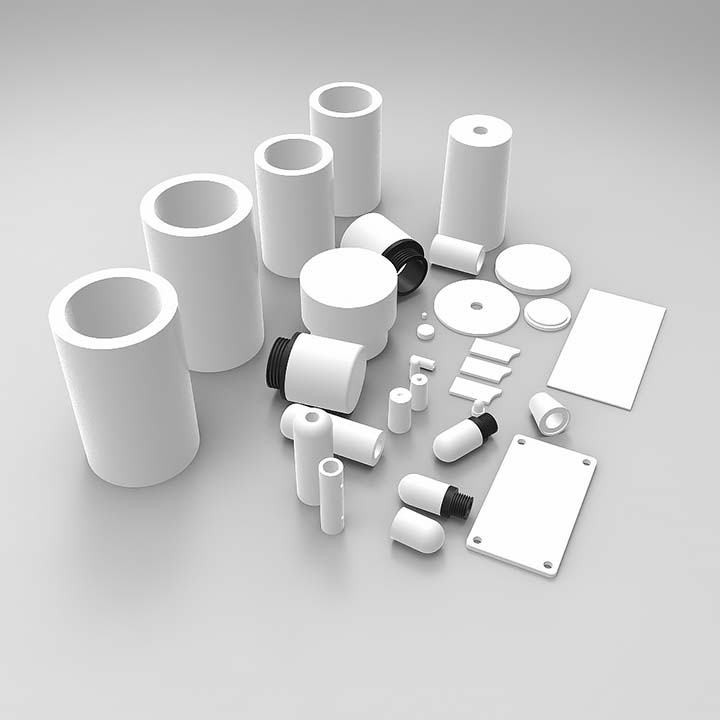Introduction: Why Filtration Matters in Industrial Systems
Clean fluids and gases are essential to keeping machinery, processes, and environments running efficiently. Whether in compressed air systems, hydraulic equipment, or food-grade fluid pipelines, filtration prevents contamination, minimizes wear, and extends system longevity.
Among the wide variety of filter technologies available, sintered bronze filters have earned a reputation for robust performance, reusability, and versatility. Their porous metal structure, created through a process called sintering, offers depth filtration, mechanical strength, and long service life—making them a favorite across industries ranging from automotive and pneumatics to medical and food processing.
In this article, we take a deep dive into what a sintered bronze filter is, how it’s made, how it works, and why it’s often the smarter choice over conventional filtration media.

What Is a Sintered Bronze Filter?
A sintered bronze filter is a porous metallic filtration element made by powder metallurgy. Fine bronze powder—typically a copper-tin alloy—is compacted in a mold and then heated below its melting point in a furnace. This process causes the particles to bond at their contact points without melting entirely, creating a solid, rigid structure with interconnected pores.
These filters are widely used in both gas and liquid filtration applications and are valued for their:
- Durability
- Customizable porosity
- Resistance to deformation
- Reusability after cleaning
The Manufacturing Process: Powder Metallurgy and Sintering
Step-by-Step Overview
- Powder Selection
- Bronze powder (typically CuSn8 or Cu 90 / Sn 10) is chosen based on particle size and distribution.
- Additives like graphite may be included for self-lubricating filters.
- Cold Compaction
- The powder is pressed into shape using a die and hydraulic press at high pressure.
- The compacted form is known as a “green body”.
- Sintering
- The green body is placed in a sintering furnace under a controlled atmosphere.
- Heated to just below bronze’s melting point (~850–900°C) for several hours.
- Particles fuse together at contact points, forming a strong, porous matrix.
- Post-Processing (Optional)
- Filters may undergo nickel-plating for enhanced corrosion resistance.
- Additional machining, shaping, or surface treatments may be applied.
This manufacturing process enables the creation of filters in custom shapes—from discs and bushings to cones, tubes, and complex forms.
Structural Characteristics of Sintered Bronze Filters
Material Composition
- Copper-Tin Alloy (Bronze):
- Most common ratios: 90/10 or CuSn8.
- Offers corrosion resistance and moderate mechanical strength.
- Optional Coatings:
- Nickel-plating can be applied to improve resistance to harsh chemicals or humidity.
- Graphite-lubricated bronze can be used in dynamic applications like bushings.
Porosity and Pore Size
- Pore Size Range: 5 to 100 microns (customizable)
- Porosity: 30%–50% void volume
- Filter Type: Depth filtration, capturing particles throughout the filter—not just on the surface.
Mechanical Properties
- Temperature Resistance: Up to 250°C (482°F)
- Pressure Tolerance: 5–10 bar (72–145 psi), depending on wall thickness and design
- Chemical Compatibility: Suitable for non-aggressive fluids and moderate pH ranges
How Do Sintered Bronze Filters Work?
The filter operates by allowing fluid or gas to pass through its 3D porous network. As the medium flows through:
- Particles become trapped within the tortuous path of pores.
- Flow slows down slightly, improving filtration efficiency.
- The filter remains permeable due to even particle loading across the depth.
This mechanism supports gradual clogging rather than abrupt blockage, ensuring longer operational intervals and more reliable system performance.
Key Performance Advantages
1. Reusability
Unlike disposable paper or fiber filters, sintered bronze filters can be cleaned and regenerated multiple times using:
- Compressed air
- Solvent soaking
- Ultrasonic cleaning
- Thermal degreasing
This significantly reduces replacement costs and waste.
2. No Media Migration
Fibrous filters can shed particles over time, especially under high flow or pressure conditions. Sintered bronze filters, being solid metal, have no loose fibers or binders that can enter the process stream—making them suitable for sensitive applications like medical or food processing.
3. Dimensional Stability
The monolithic metal structure ensures resistance to deformation, cracking, or collapse even under high pressure or vibration.
4. Customizable Geometry
Sintered bronze filters can be manufactured in various shapes and sizes:
- Discs
- Cylindrical tubes
- Cones
- Filter plugs
- Silencer caps
This flexibility supports integration into OEM assemblies or compact system designs.
Common Applications of Sintered Bronze Filters
1. Pneumatics and Compressed Air Systems
- Remove water, oil mist, and particles
- Prevent damage to valves, regulators, and actuators
- Often integrated into silencers and mufflers
2. Hydraulic and Lubrication Systems
- Protect pumps and control valves from particulate contamination
- Maintain fluid cleanliness to prevent system wear
3. Medical and Food Equipment
- Suitable for sterile air or gas filtration when passivated
- Easy to clean and sanitize
- Ideal for spray nozzles and precision dispensers
4. Chemical and Process Industries
- Used in fluidized beds to distribute gases
- Control reaction rates through uniform gas flow
- Withstand high-pressure operation in process vessels
5. Automotive and Engines
- Breather vents
- Fuel and oil filtration
- Emission control systems
Why Choose Sintered Bronze Over Other Filter Media?
| Feature | Sintered Bronze | Fiber Filters | Ceramic Filters | Mesh Screens |
|---|---|---|---|---|
| Reusability | ✅ Yes | ❌ No | ❌ Limited | ❌ Limited |
| Thermal Stability | ✅ High | ❌ Low | ✅ Medium–High | ✅ Medium |
| Pressure Resistance | ✅ Good | ❌ Low | ✅ Medium | ✅ Medium |
| Media Migration | ❌ None | ✅ Yes | ❌ None | ❌ None |
| Maintenance | ✅ Cleanable | ❌ Replaceable | ✅ Somewhat | ✅ Cleanable |
| Custom Geometry | ✅ Complex shapes | ❌ Limited | ❌ Rigid | ✅ Simple only |
Cleaning and Maintenance
Proper cleaning extends filter life significantly. The general service procedure includes:
Mechanical Cleaning:
- Blow with compressed air (inside-out)
- Nylon brushing for surface deposits
Chemical Cleaning:
- Soak in degreasers, alcohol, or acetone
- Rinse thoroughly
Ultrasonic Cleaning:
- For deep contamination
- Use mild detergent, 5–10 minutes at 50°C
Thermal Cleaning:
- Burn off carbonized material in a furnace at 400–500°C
- Cool slowly
Inspection:
- Check for cracks, blockages, or deformation
- Use bubble-point testing for precision systems
A sintered bronze filter can typically be cleaned and reused 10–20 times, depending on the environment and handling.
Customization Options
Design Flexibility:
- Threaded ends
- Flanged bases
- O-ring grooves
- Pressure-rated housings
Integration Features:
- Sound attenuation (as silencers)
- Backpressure regulators
- Built-in diffusers or flow restrictors
Customization allows manufacturers to design integrated filter components instead of relying on separate assemblies—reducing space and improving performance.
Limitations to Consider
While sintered bronze filters offer many advantages, there are a few limitations:
- Not suited for very aggressive chemicals unless coated
- Pore size not as fine as membrane filters (not sub-micron)
- Bronze may oxidize over time in high-moisture environments if not passivated or plated
For highly corrosive or ultra-fine filtration applications, consider sintered stainless steel or multi-layer membrane technologies.
Frequently Asked Questions (FAQ)
Q1: What is the typical pore size range for sintered bronze filters?
Most sintered bronze filters range from 5 to 100 microns, but custom specifications are possible depending on powder grade and compaction.
Q2: Are sintered bronze filters safe for food or medical use?
Yes, when properly passivated and cleaned. Nickel-plated versions offer enhanced corrosion resistance in sanitary environments.
Q3: How often should sintered bronze filters be replaced?
With proper maintenance, they can last for years. Replacement is only necessary when the structure degrades or performance declines after many cleaning cycles.
Q4: Can sintered bronze filters handle high flow rates?
Yes. Their porosity allows good flow with moderate pressure drop. For extremely high flow or minimal resistance, larger surface areas or multiple units may be used.
Q5: Do sintered bronze filters rust?
Bronze itself doesn’t rust like iron, but it can oxidize. Nickel plating or protective coatings can prevent surface discoloration in moist environments.
The Smart Choice for Long-Term Filtration
Sintered bronze filters offer a powerful combination of mechanical strength, reusable performance, and application flexibility. From pneumatic silencers to hydraulic protection and sterile gas filtration, these components deliver reliable results in challenging industrial settings.
Their ability to be cleaned and reused, shaped to fit almost any design, and customized for performance makes them an ideal solution for forward-thinking manufacturers and system designers alike.
Discover our full range of sintered bronze filter elements and request custom configurations here to upgrade your industrial filtration system.




